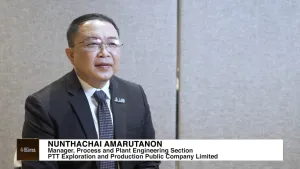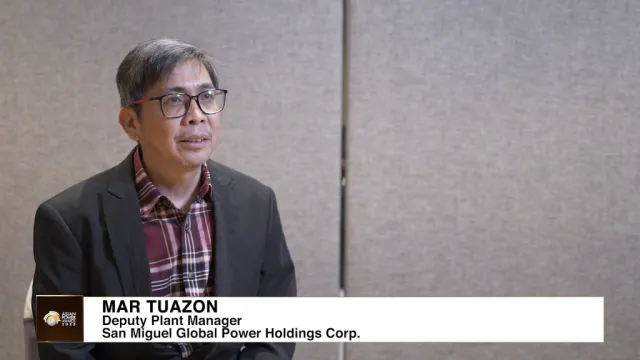
Are Asia's geothermal power targets too low?
Despite efforts to ease policies, geothermal leader Indonesia only uses up 2GW of its 29GW potential capacity.
Indonesia has been slowly but surely ramping up its geothermal power generation capabilities, especially in 2018. “With the third and final unit of the ADB-financed Sarulla geothermal power project, with a capacity of 320MW, coming online, Indonesia now has the world’s second largest installed geothermal power generation capacity after the US,” Yuichiro Yoi, principal investment specialist at Asian Development Bank’s (ADB) private sector operations department, told Asian Power.
This sentiment was echoed by a recent report by Fitch Solutions, which went as far as estimating that Indonesia could surpass the US as the world’s largest geothermal market by 2022.
The report, which forecasted growth in Indonesia’s total geothermal generation to average 9.2% YoY between 2019 and 2022, noted that Indonesia’s location along a convergent tectonic plate boundary has made it ideally suited for geothermal power production.
“However, with 29GW potential the current 1.9GW is only a fraction of the country’s geothermal potential,” Yoi said. Fitch Solutions’ report also noted that despite the firm’s bullish outlook on the industry, its forecasts only represent about half of the capacity currently included in its key projects database for Indonesian non-hydropower renewables.
This reflects the global issue of the geothermal power sector, which requires a high initial capacity outlay required to explore and engage in high-risk drilling for potential resources.

Low geothermal tariffs
The report underlined how government-regulated electricity tariffs are set artificially low, therefore restricting potential returns on investment, and likely deterring risk-averse investors from entering the market. The landscape seems to have not changed much, as this sentiment was echoed by a 2015 ADB report, which added that efforts to scale up renewable energy use, particularly geothermal energy, are constrained by implementation challenges, lack of capacity, environmental issues, permitting delays, and a history of low pricing.
“The challenges are related to the risks and financial burden associated with exploration to find geothermal resources,” Yoi said. “Anyone intending to develop a geothermal site has to spend tens of millions of dollars in exploration drilling without any certainty the resource exists, what its characteristics might be, and its commercial exploitability.”
By 2025, the country is targeting geothermal production capacity to reach 5GW. Plans to loosen foreign direct investment (FDI) restrictions are said to be underway, with FDI being able to reach
up to 100% in 54 sectors. That said, there will be no change in respect to ownership (67%) of geothermal power generation of up to 10MW.
Yoi noted that in order to expedite Indonesia’s untapped geothermal potential, ADB committed $175.3m for the second phase of another geothermal power project, the Rantau Dedap Geothermal power project, in March 2018. The project in South Sumatra is said to have a total capacity of approximately 90MW and will be implemented under a 30-year power purchase agreement (PPA) with state-owned electricity distribution corporation PLN.
He further added that there are efforts being made to support projects implemented by GeoDipa, the Indonesian state-owned enterprise in charge of geothermal development, on a sovereign basis. Earlier in July, PT Geodipa Energi conducted its groundbreaking ceremony for a planned 10MW small scale geothermal plant on the Dieng Plateau Geothermal Field in Central Java.
Two Indonesian geothermal power plants—the 55MW Lumut Balai plant and the 40MW Sorik Marapi plant—also went online in March 2019. The 5MW Sokoria geothermal plant is also
expected to come online in H2 2019, whilst a project in West Sumatra, the 80MW Muara Laboh plant, is currently undergoing construction. Together, the four projects are expected to add up to
180MW of capacity to the national grid.
Philippines’ geothermal potential
Further west, Yoi noted that the Philippines is another “Ring of Fire” country with considerable potential. The Philippines’ non-hydro renewable power capacity accounted for 16.9% of its total
energy mix, led by geothermal, a report by GlobalData revealed.
In its proposed Philippine Energy Plan 2017-2040, which aims to increase the country’s renewable energy installed capacity to at least 20,000MW, the Department of Energy (DOE) noted that around 16,949MW of potential renewable energy capacities are expected within the horizon - of which geothermal is expected to account for 684MW.
In March, the DOE gave the green light to 11 power firms to proceed with the conduct of a grid impact study (GIS) on their respective planned power projects with over 1.2GW of capacity. This included the 120MW geothermal power project of Aragorn Power & Energy Corp in Pasil, Kalinga Province which announced almost two weeks later that it was ready to start drilling.
“However, since the building of hydro and geothermal facilities usually takes three to five years, many are more excited about the prospects of solar facilities, which are easier to put up and scale, and are relatively unobtrusive,” the agency noted. GlobalData’s report also noted that the country’s cumulative installed capacity for geothermal is expected to drop to 4.5% in 2030, from 7.8% in 2018, as investors and developers turn to hydropower, wind and solar.
Elsewhere, other countries in the region are making moves to tap further into their geothermal potential. Japan fired up its first large-scale geothermal power station after 23 years in late May. The 46MW Wasabizawa geothermal power plant, a joint project between Electric Power Development (J-Power), Mitsubishi Materials Corporation and Mitsubishi Gas Chemical Company, had reportedly been in the works since May 2015.
The firms estimated that the country’s geothermal potential stands at 23.4MW, placing Japan at third place behind the US and Indonesia. The local government has also set a target of renewable energy sources supplying between 22-24% of electricity by 2030, with geothermal providing 1.6GW or 1% of Japan’s power.

Project pipe dream
However, this looks to be a pipe dream compared to the current situation, with Japan having only installed a geothermal capacity of about 5MW, placing in 10th worldwide. “We think the target for geothermal is too low,” Tatsuya Wakeyama, a senior research fellow at the Tokyo-based Renewable Energy Institute, said in a report, adding that 2.6GW could be a realistic goal for 2030.
Meanwhile, Fitch Solutions noted that growing competitiveness in the research and design of low-temperature and low-pressure geothermal power generation technology has begun to present significant potential for medium-term growth in the market.
Recent innovation in the development of binary-cycle generation, which uses medium-high temperature water to heat a liquid with a lower boiling point than water, has reportedly significantly reduced the requisite temperature of geothermal resources. The firm noted in its report that ongoing innovations in binary organic rankine cycle (ORC) generators will offer a particularly pertinent bright spot for investors in the near-medium term.
Binary cycle generators
“By utilising heat exchangers to vaporise specialised fluids with low boiling points in closed cycle, binary ORC units can generate electricity at temperatures as low as 70°C, considerably broadening the feasibly exploitable geothermal resources around the world,” the report’s researchers explained.
“With private-sector geothermal power corporations standing to gain significantly from broadening the availability and reducing the cost of geothermal power development around the world, we expect that this will become a key area of competition in the market. Furthermore, we note that this will pose a considerable upside risk to our geothermal power forecast in the medium-long term, as we only forecast a total of 4.2GW of capacity to be installed between the end of 2018 and 2028.”
As well, Yoi observed that one potentially interesting area is the development and proliferation of geothermal exploration insurance products to de-bottle-neck exploration efforts. “There seems to have been a few cases where such insurance was provided by insurance companies. If they can build a critical mass of portfolio to create diversification effects, and thereby bring down the still-very-expensive insurance premium, that could potentially boost the geothermal sector,” he said.



















 Advertise
Advertise







